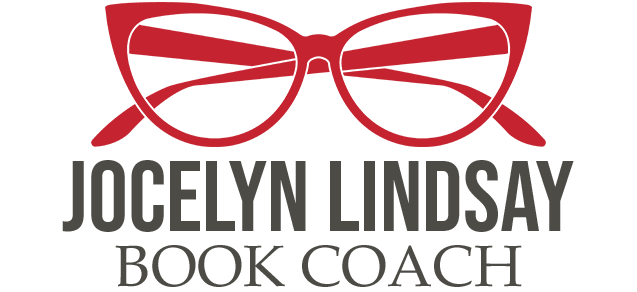wrap your pitch in Tyra Banks’ thong
Raise your hand, if you’ve ever been introduced as, “This is my friend, The Writer.”
Suddenly you’re a superhero: THE WRITER.
“Oh hey, that’s really cool! What’s your novel about?” Their eyes light up as they imagine around-the-block lines of Beatles fans thrusting their books in your face screaming for an autograph.
This is your moment to shine. The spotlight is on you.
“Uhm… It’s about a tabloid journalist who travels through time and uhm goes back to the 1940s to infiltrate a longterm care facility by pretending to be an uhm patient because demons are trying to kill someone important and she has to figure out who so uhm she can save them and the future and she falls in love with one of the facility doctors but uhm discovers it’s her great grandpa’s best friend and uhm it’s weird and she uhm has to learn about forgiveness and the power of love ….”
** THUNK. **
That’s the sound of the person you’ve been introduced to falling over.
Dead.
On the carpet.
Oh look, you’ve killed another one.
Okay, maybe nothing that drastic, but I’m sure you’ve seen your fair share of eyes glaze over, as their smile flattens. Before you know it they’re fleeing the scene of the pitch crime mumbling something about having left the stove on.
Bottom line, you need to learn how to pitch your novel.
It doesn’t matter if you’re trad or self publishing, you have to be able to clearly summarize what your novel is about.
Pitches aren’t just for agent sessions at conferences. You’ll need them for:
An artist who wants to know what your book is about so they can create jaw-dropping artwork for your cover.
Your agent wants to sell your book to a publisher.
Your mother who wants to brag about you to all her friends.
Writing a book jacket description.
Standing in the buffet line at a conference next to an agent who casually asks, “So what’s your book about?”
Introducing yourself to a new writer and the first words out of their mouth are, “So, what’s your book about?”
At your high school reunion and your ex from twenty years ago says, “So, you’re a writer now? What’s your book about?”
Anyone on the planet who asks, “What’s your book about?”
Sense a theme here?
Pro Tip: I ask people what their book is about all the time. It’s a sneaky way I can tell immediately if a writer knows what story they’re telling or if they’re just throwing cool ideas together.
The Purpose of a Pitch
The purpose of a pitch is to get other people wanting more.
Period. That’s it. Nothing else.
It’s not to show how clever you are, to convince anyone you’re the next Lee Child, or tell your audience everything that happens in your novel.
At different points in your career, you’re going to need different sized pitches for different scenarios.
For now, we’re going to talk about a one sentence pitch.
A one sentence pitch takes your novel (with all its characters, plots, and subplots) and condenses it into a single statement that conveys your core story.
This is possibly the most difficult pitch to write because you don’t have any words to hide behind.
A one sentence pitch is like a story thong. Any bits you’re feeling awkward about are going to stick out for everyone to see.
You want to wear your pitch with fierce confidence and strut like Tyra Banks in a thong on the runway.
4 basic elements of a pitch formula
So how do you take your 300-page novel and boil it down to a couple of perfect sentences?
Practice. Lots and lots of practice.
You strip it of all its frills, sparkles, doodads, and focus on these four essential elements:
What is the INCITING INCIDENT? (The event that kicks off the story.)
Who is your PROTAGONIST?
What does your protagonist WANT?
What CONFLICT are they going through to get it?
When you combine those elements, you should end up with something very basic that looks like this:
When INCITING INCIDENT happens to PROTAGONIST, they have to overcome CONFLICT to get what they WANT.
Here’s an example from a hit movie:
Example: When an experiment goes wrong [INCITING INCIDENT], Marty McFly [PROTAGONIST] is thrown back in time from the 1980s to the 1950s where he discovers he will cease to exist [CONFLICT] if he doesn’t make sure his parents fall in love to ensure he gets born [WANT].
Don’t know how to start? Start by writing the most basic paragraph describing what your book is about. “My book is about…” Then take out everything that’s not those four elements.
Then cut out the words that don’t matter. And cut out some more. And keep going until you’re down to the simplest sentence of your story.
Once you get the hang of it, there are all kinds of snazzy ways you can restructure your sentence.
Be as specific as possible without getting wrapped up in the details. If you’re getting lost in the your book’s details, your audience is definitely going to get lost.
Don’t worry if you don’t immediately get it the first (or 206th) time.
Being able to do this adeptly takes practice.
Have fun.
How many different ways you can write your pitch?
I challenge you to write at least 25.
When you’re feeling ready to strut your pitch, send your favorite over to me at jocelyn@jocelynlindsay.com
Hello!
My name is Jocelyn.
Story warrior, book lover, day dreamer, gardener, and creative. I help serious writers roll up their sleeves, get their novel ready for publishing, and reach readers. When I’m not elbow-deep in the story trenches, I’m outside world-building in my garden and battling weeds with my three criminal mastermind cats.
GET IT NOW
Don’t write another chapter until you grab the 10 Step Chapter Checklist.
Transform your chapters from blah to badass.


